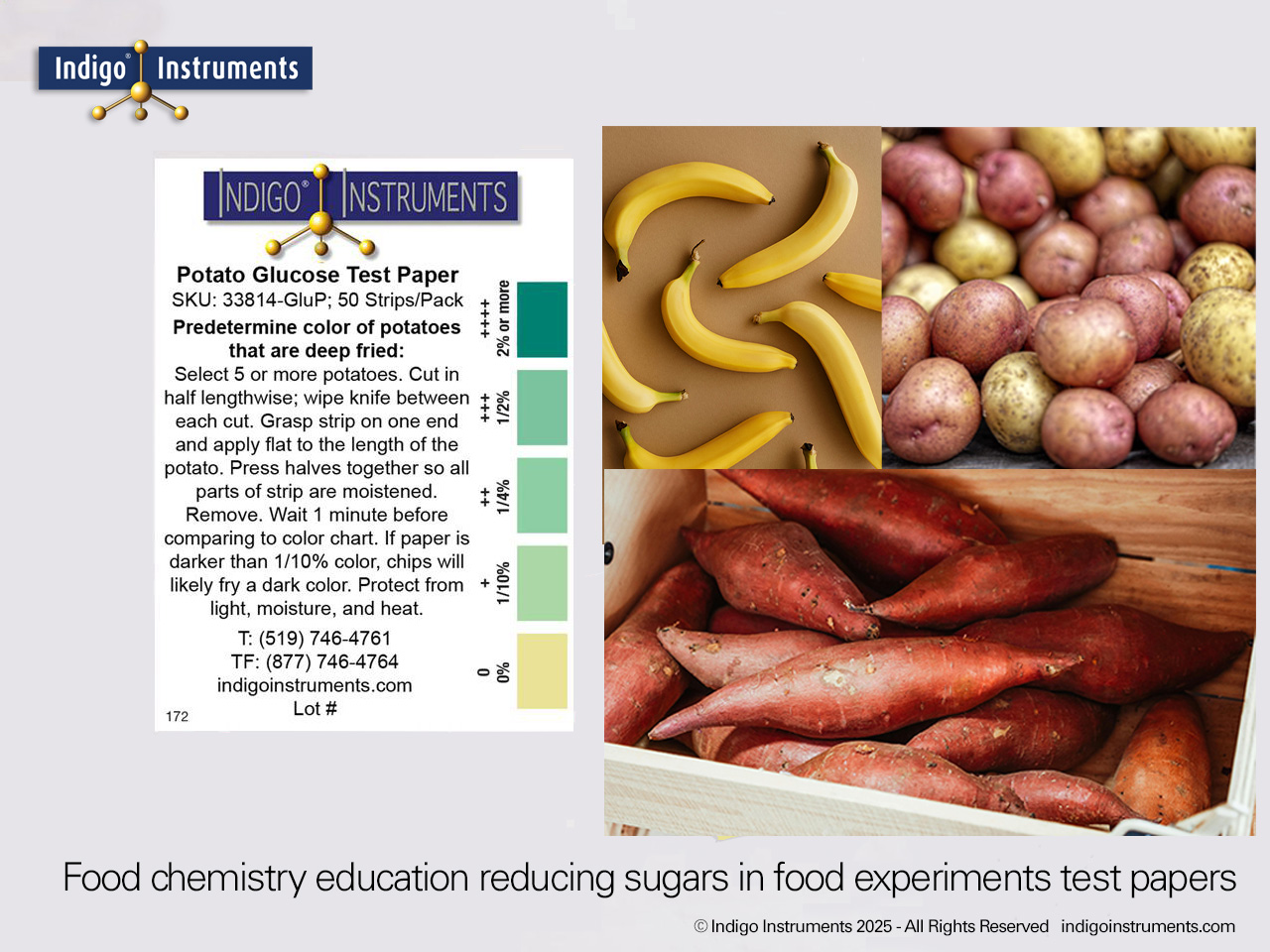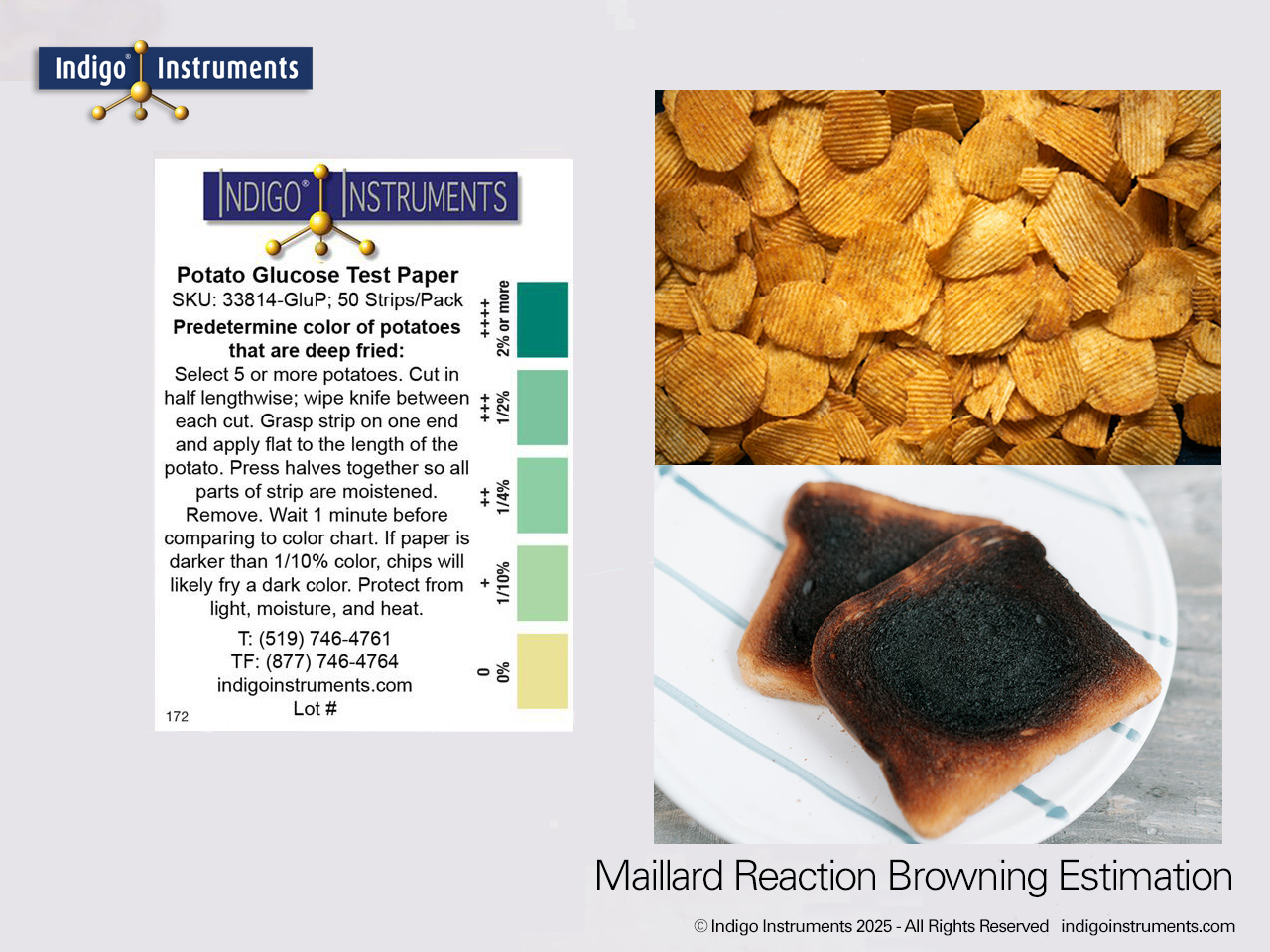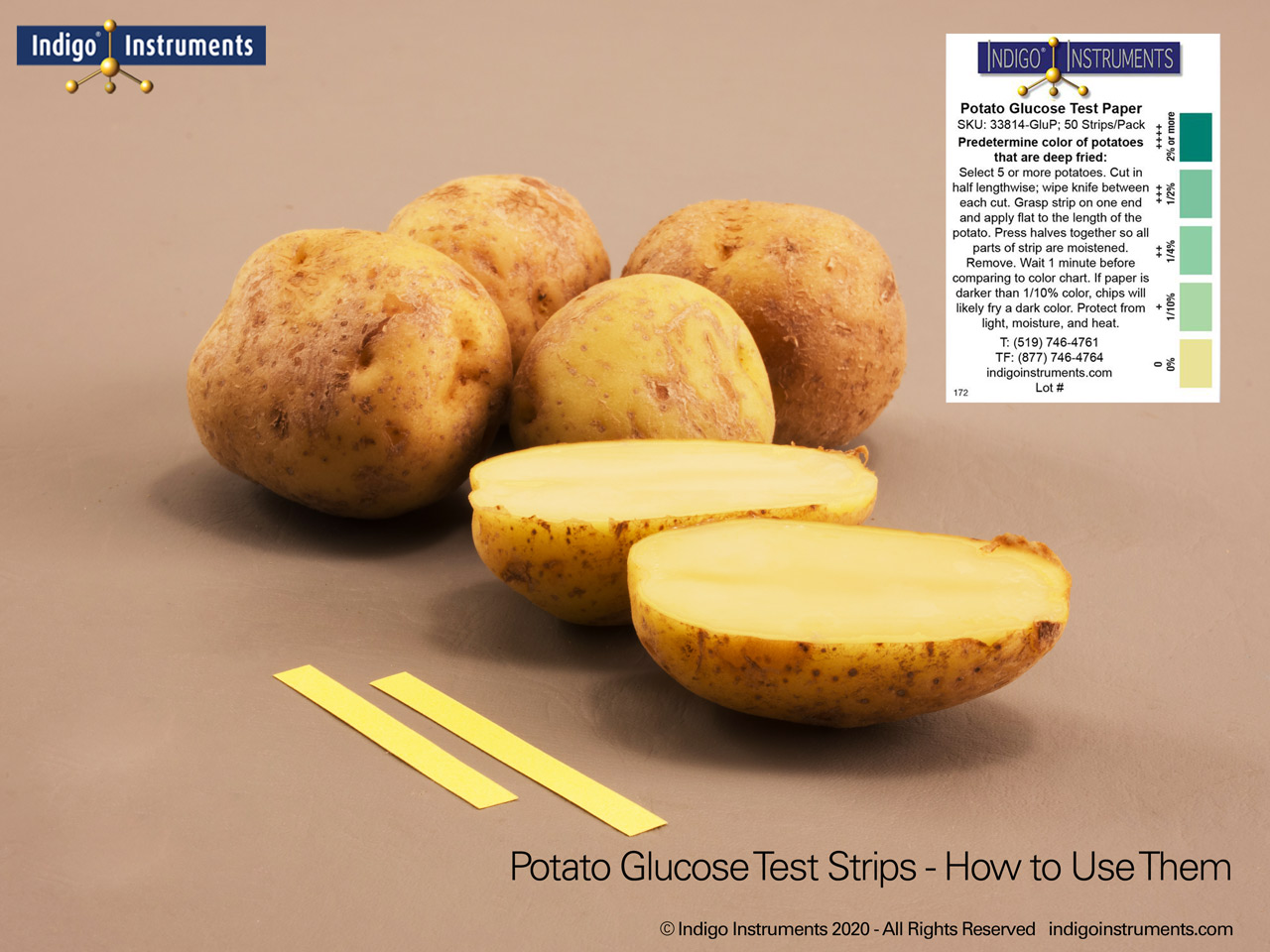Food Chemistry Education Glucose Test Papers
SKU: 33814-GluP
Let Indigo® potato glucose test papers enrich your food chemistry lessons by showing how storage, variety, and starch breakdown affect reducing sugars and browning reactions.
Indigo® potato glucose test papers provide a fast, visual way to study reducing sugar chemistry in everyday foods. Because they respond specifically to glucose, students can easily compare sugar formation during storage, cooking, or enzymatic breakdown in potatoes and other starchy materials.
These experiments illustrate the link between carbohydrate chemistry and food quality, helping learners connect molecular reactions to real-world outcomes such as browning, aroma, and flavor. The test papers also introduce principles of enzymatic specificity, reaction kinetics, and analytical method validation which are core topics in any food chemistry or nutrition course.
For enzymatic detection details, see Glucose Oxidase–Peroxidase Mechanism. For potato testing instructions, see Potato Glucose Test Papers in Use.




